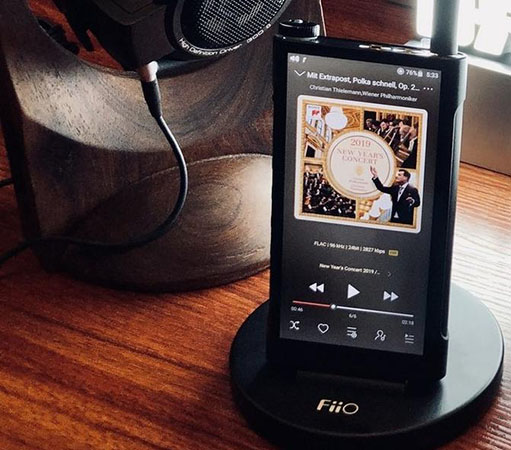
FiiO M15: unbox and package content
The FiiO M15 audio player in my hand is a signed version of James that I asked a boss at the scene to help buy after the press conference on the 28th. The packaging of M15 is really a flagship identity, completely different from the previous arrogant player packaging, with a total of four layers, and the innermost box is a high-end black walnut box, which looks much better than previous M11 PRO.
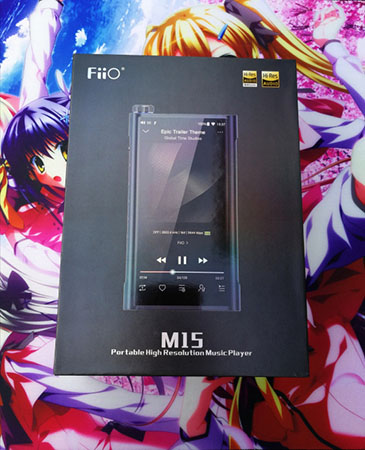
When you open the wooden box, you can see the player, because there are some radians on the front of the M15, so it doesn’t put on a screen protector, but it offer one in the package box.

The front panel of M15 adopts Corning gorilla glass, so it should not be too easy to scratch if you don’t put on the screen protector for it. There is a Type-C data cable and a coaxial adapter cable in the package, which seems a little shabby. Fortunately, the M15 has an unlimited single gift bag as a supplementary accessory.

FiiO M15: design
The overall appearance style of FiiO M15 changed the steel line style of M11 and M11 PRO before, but adopted a more round design for large volume holding feeling, specific size: 134mm high, 75mm wide, 18mm thick, weight 310g, shell material is aluminum magnesium alloy plus surface anodizing.

Although the overall appearance is not as good as M11 PRO, but for the practical consideration of the function, FiiO designed the button knob and interface layout of the M15 to be more inclined to decode and amplify the ear.
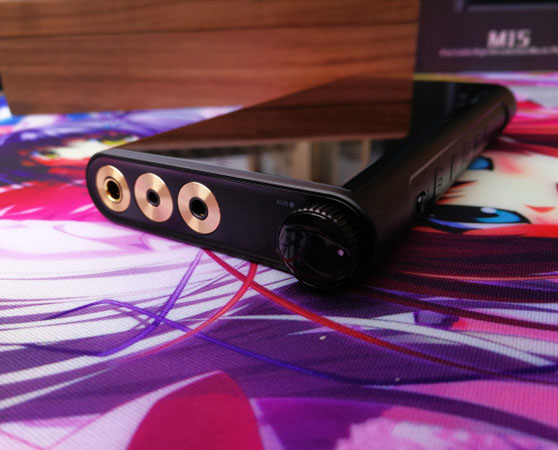
The top left side uses the analog potentiometer volume knob, and the bottom circle of the knob will glow, which can be changed according to the volume, breathing effect and long light, of course, can also be set to turn off the glow. Then the right side of the analog potentiometer is 3.5mmPO LO coaxial composite interface, 2.5mm balance, 4.4mm balance, and there are gold decorative rings around the three interfaces.
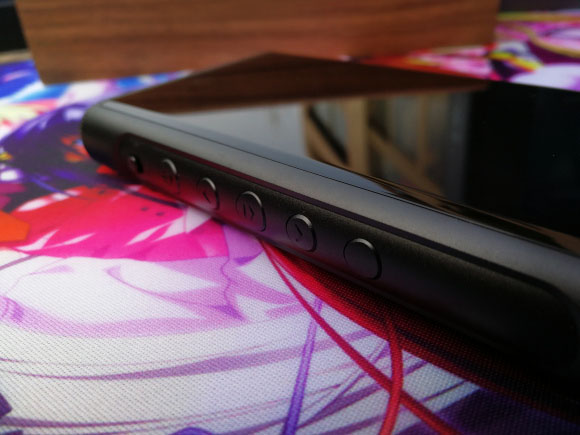
At the top of the left side button, there is a physical HOLD lock key that exists only on the X3 generation, which is now back on the M15, followed by the power key, the previous song, the play / pause key, the next song, and the function custom key.
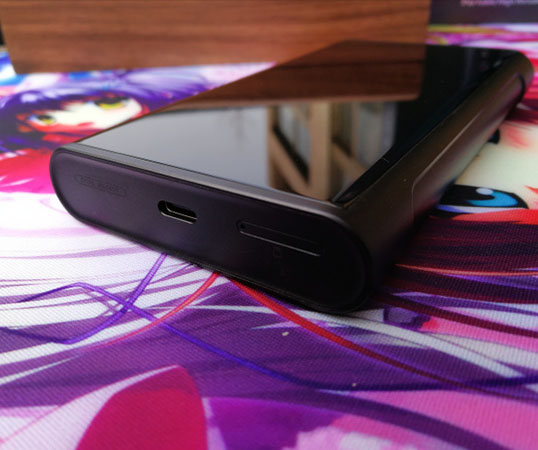
In the middle of the bottom is the Type-C interface, next to a TF card slot designed by Cato. There are no function buttons on the right, just like M11 PRO in other places, such as the same 1440×720 resolution at 18:9, the same tempered glass back, less obvious carbon fiber patterns and the necessary authentication information.
FiiO M15: software
In terms of software, it runs Android version 7.0 and supports full-screen gesture operation, you can also turn on virtual keys if you don’t want to use gestures. Other features should be available, such as hard decoding DSD256 (USBDAC mode supports up to 768kHz/32bit | DSD512), fluent support for DST coding, 2.4G/5G dual-band WIFI, Bluetooth version 4.2, launch support LDAC/HWA/aptX/aptX HD/SBC protocol, Bluetooth receiver version 5.0, Receive support SBC/AAC/aptX/aptX LL/aptX HD/LDAC protocol, support FiiO Link functions (Bluetooth and other WIFI), like: online matching load cover lyrics, wireless song, DLNA, AirPlay, optimized version of ALL TO DSD support, and added eightfold MQA coding support.
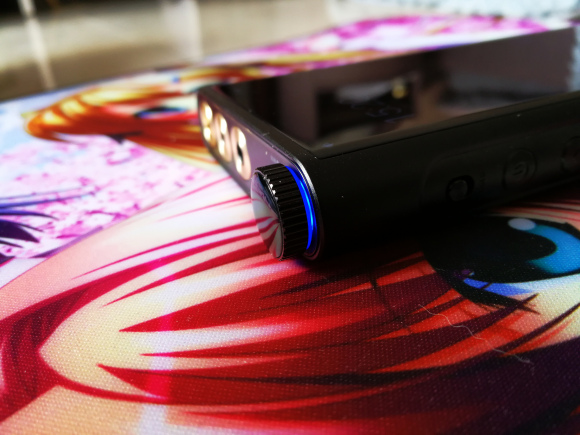
FiiO M15: processor, battery and other hardware
The FiiO M15 adopts Samsung Exynos 7872 chip, which is the same as that of FiiO M11 and M11 Pro. And it offers 3GB of memory and 64GB of built-in storage.
The battery capacity reaches a terrifying 7490mAh, supporting QC2.0/MTK PE double fast charging and PD2.0 charging, because the battery life data of other players given by FiiO official before are basically the same as my measured data, so this M15 I will not test the battery life of the normal mode with official data (15 hours at single end, 9 hours of balance), but only test the battery life of the balanced output of the big ear mode with no parameters, and the headset is HD660S.
Using the test mode of playing ordinary lossless music with high gain and no operation, it is found that the power consumption of the headset with high push Ohms of the big ear mode is not much increased as expected, and the battery life is close to 9 hours.
By the way, M15 is the hardware gain, compared with the software gain, the difference between the hardware gain setting is more obvious, if the software gain is basically no brain to set high gain.
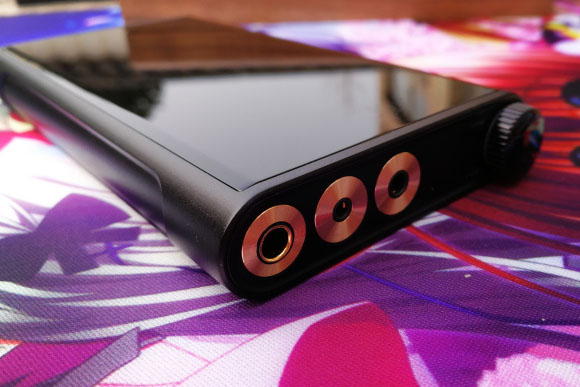
As for the output power (big ear mode) is one of the main highlights of the M15, the specific parameters are as follows:
● Single-ended output (normal mode) 215mW (32 Ohms), 31mW (300 Ohms), bottom noise < 2.1uV.
● Single-ended output (big ear mode) 490mW (32 Ohms), 70mW (300 Ohms), bottom noise < 3uV.
● Balanced output (normal mode) 635mW (32 Ohms), 120mW (300 Ohms), bottom noise < 3.8uV.
● Balanced output (big ear mode) 800mW (32 Ohms), 280mW (300 Ohms), bottom noise < 5.2uV.
The above data show that the output power of the M15 in the big ear mode is very amazing, which is comparable to some small desktops in the balanced output mode, and the bottom noise in the ordinary mode can continue to be slightly lower than that of the M11 PRO, which is really not easy to do.
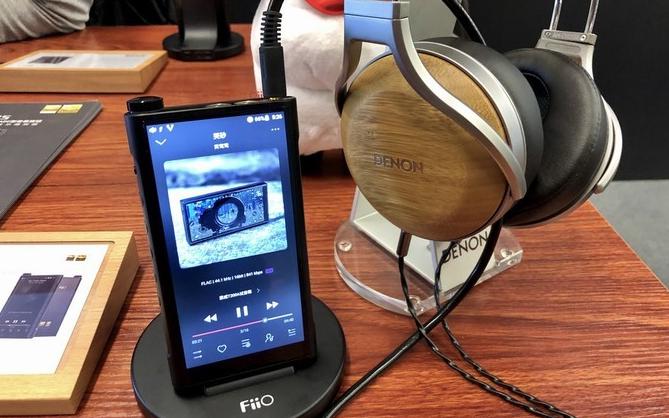
As for why the FiiO M15 has such a large output power, taking apart the machine, we find that the M15’s ear amplifier circuit belongs to the monster-level stacking material, with a total of nearly 60 high-precision low-loss capacitors and more than ten operational amplifier chips with different functions arranged on the PCB board, plus a more complex multi-channel power supply than Q5S to ensure the M15’s high power and pure output requirements.
The ear amplifier circuit is so crazy that the DAC chip is also loaded with two AKM’s latest flagship AK4499EQ, AK4499EQ, which is a current-driven DAC.
To put it simply, the sound must be smoother in the current mode. At the same time, the design of the current mode DAC ear amplifier can be relatively freer, the voltage type will save more power, and the chip will be smaller. The only disadvantage of the current mode is that the power consumption and heating are much higher than those of the voltage type. For example, the power consumption of the AK4499EQ is directly doubled compared with the voltage type AK4497EQ.
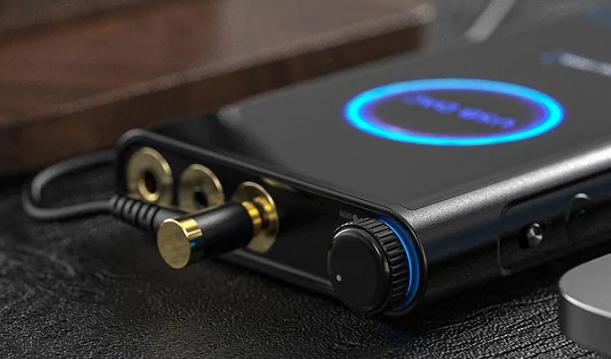
M15 is an audio player that heaps materials in various places, such as CSR8675 Bluetooth chip and XMOS chip, which used to be used in decoding ear amplifier. As a result, in order to enhance the practicability of Bluetooth reception and improve the function of USB, M15 uses an independent CSR8675 Bluetooth chip board to achieve full format reception, and this way will greatly reduce the problem of sound delay in the previous Bluetooth reception mode.
The XMOS chip then gives the USBDAC a higher output specification and avoids latency. And the M15 is the first machine to use femtosecond crystal oscillator, combined with the clock phase-locked loop formed by the more optimized third-generation FPGA algorithm to further reduce the jitter of the whole machine.
FiiO M15 vs FiiO M11 PRO: which one offers better sound quality?
The last time I wrote a review about FiiO M11 PRO, I said that the level of M11 PRO can not be widened compared with X7II+AM3D, but it is more optimized and more refined. But this time M15 can actually shake off the M11 PRO in terms of sound, this gap is not a problem of tuning, but a gap in overall quality.

M15 is almost as balanced as M11 PRO in three-frequency distribution, but M15 has a slight increase in high-frequency energy sense, M15 high-frequency extension is very good and has a high sense of air.
In low frequency, when the sense of quantity is the same as that of diving, the elasticity and hierarchy are improved compared with M11 PRO, and the position of mid-frequency voice is almost the same as that of M11 PRO, but the definition of M15 voice is much higher, and the female voice tends to be a little younger, at the same time, the distribution of voice and musical instruments is clearer.
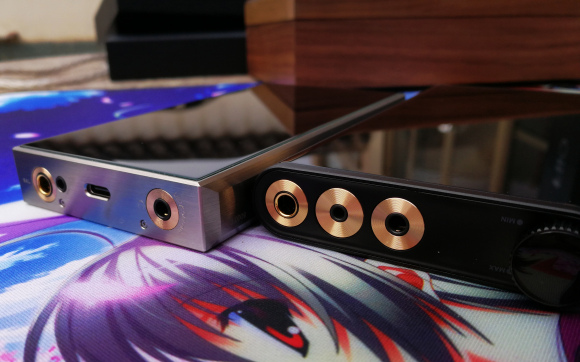
Sound field and dynamics are very prominent places in M15, and the disadvantages of these two aspects in M11 PRO have been very obviously compared. If you describe M11 PRO as a bit of “little Jasper”, it is the feeling of lack of exquisite residual energy. It is not this kind of feeling at all on M15, but it is very atmospheric, wide opening and closing, and the stereoscopic sense of sound scale is better. This kind of feeling does not exist on the player before flying arrogance.
Generally speaking, M15 has great advantages over M11 Pro in terms of resolution, information, image definition, sound field range, separation and dynamics. The M11 Pro can’t take advantage of the M15 even with the exquisite degree of THX AAA ear amplifier.
Wrap up
What I feel most about using M15 in the past two days is that M15 is not only a flagship portable player, but also a flagship portable decoding earphone with perfect function and reasonable design, but also a flagship full format Bluetooth headamplifier.
Therefore, M15 basically heaps up many other uses of portable players that are not perfect because of the lack of hardware. Coupled with flagship sound performance, smooth operation experience and mature industrial design, the decoding ear amplifier function and wireless Bluetooth function have been successfully integrated into the portable player, so the existence of the M15 is almost the only one in the portable player.
Coupled with monster-level hardware and output, FiiO uses action to interpret their understanding and positioning of the flagship. It can be said that the price of the M15 is still the cost-effective route that FiiO adheres to. FiiO has not changed its price, and the changed price is just to make a better machine and be more in line with the name of the flagship recognized by FiiO.
FiiO M15: Main specs
|
System chip |
Exynos 7872 |
|
DAC chip |
AK4499EQx2 |
|
Supported rates |
768kHz-32bit, DSD512 native |
|
USB |
Type-C, USB 2.0 |
|
Screen |
5.15 inch 1440 x 720 borderless 10-point touch display |
|
Dimensions |
134mmx75mmx18mm (excluding volume knob) |
|
Weight |
About 310g |
|
Charging time |
<3.5h |
|
Battery capacity |
7490mAh |
|
Battery life |
15 hours |
|
Output Power 1 |
490mW (32Ω/single-ended/big driver mode) |
|
Output Power 2 |
70mW (300Ω/single-ended/big driver mode) |
|
Output Power 3 |
800mW (32Ω/balanced/big driver mode) |
|
Output Power 4 |
280mW (300Ω/balanced/big driver mode) |
|
Frequency response |
20Hz – 90Hz (-3dB) |
|
Signal to Noise Ratio |
≥122dB (A-weighted) |
|
Noise Floor |
PO<2.1uV (A-weighted); BAL<4uV (A-wighted) |
|
Output impeda nce |
<1.1Ω (32Ω load) |
|
THD+N |
<0.0004% (1kHz/10kΩ) |
 |
Extensive Product Selection● Over 300,000 products ● 20 different categories ● 15 local warehosues ● Multiple top brands |
 |
Convenient Payment● Global payment options: Visa, MasterCard, American Express ● PayPal, Western Union and bank transfer are accepted ● Boleto Bancario via Ebanx (for Brazil) |
 |
Prompt Shipping● Unregistered air mail ● Registered air mail ● Priority line ● Expedited shipping |
 |
Dedicated After-sales Service● 45 day money back guarantee ● 365 day free repair warranty ● 7 day Dead on Arrival guarantee (DOA) |










